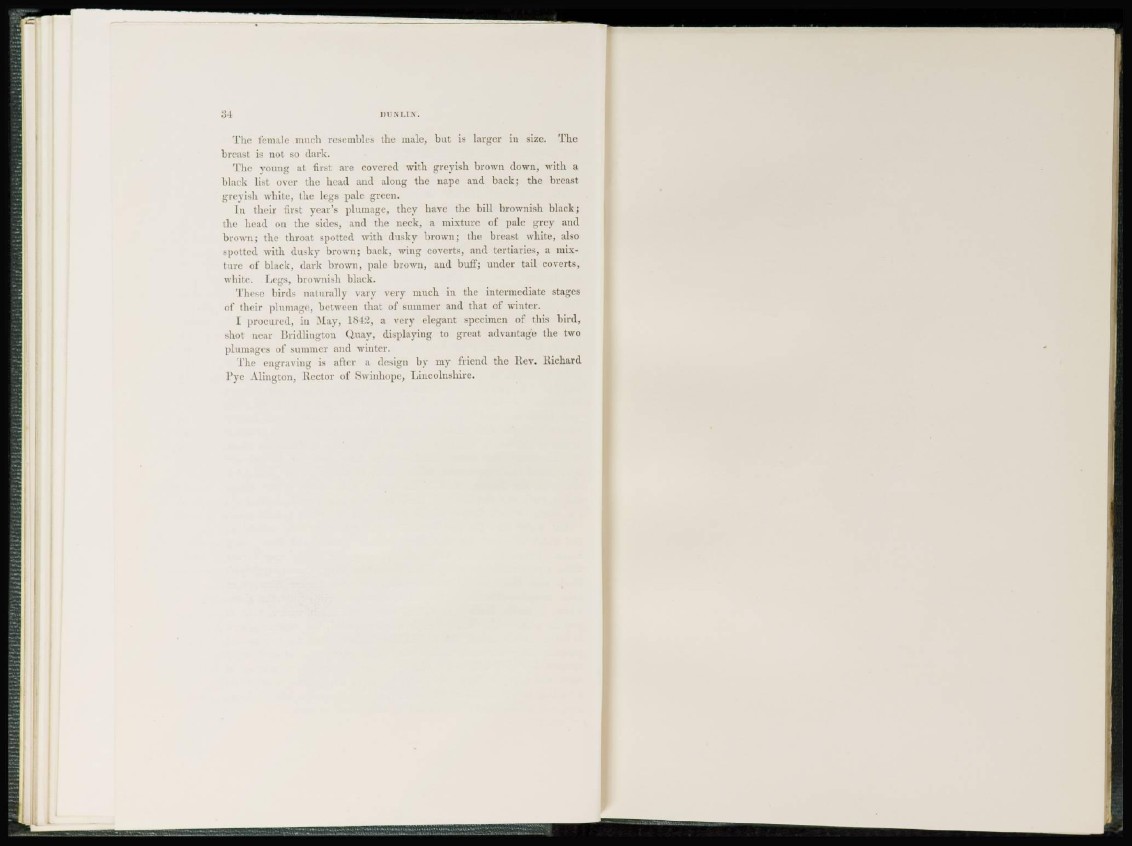
34 DUNLIN.
The female much resembles the male, but is larger in size. The
breast is not so dark.
The young at first are covered with greyish brown down, with a
black list over the head and along the nape and back; the breast
greyish white, the legs pale green.
In their first year's plumage, they have the bill brownish black;
the head on the sides, and the neck, a mixture of pale grey and
brown; the throat spotted with dusky brown; the breast white, also
- p o t t e d with d u s k y brown; back, wing coverts, and tertiaries, a mixt
u r e of black, dark brown, pale brown, and buff; under tail coverts,
white. Legs, brownish black.
These birds naturally vary very much in the intermediate stages
of their plumagej between that of summer and that of winter.
I procured, in -May, 18 i'i, a very elegant specimen of this bird,
shot near Bridlington Quay, displaying to great advantage the two
plumages of summer and winter.
The engraving is after a design by my friend the Kev. Richard
Pye Alington, Rector of Swinhope, Lincolnshire.